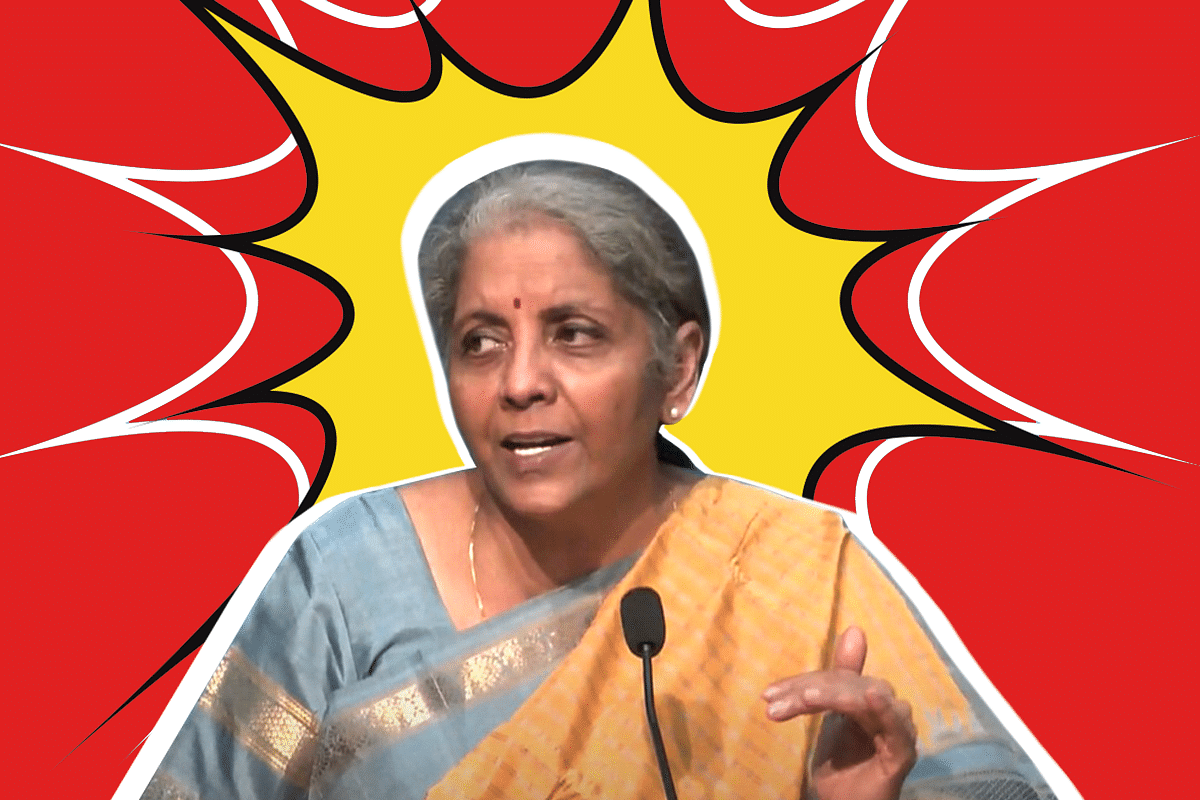Economy
Budget 2021 For India’s 2020s
- Ambitious while being responsible, Budget 2021 lays the track for Indian economy’s growth this decade.

Union Finance Minister Nirmala Sitharaman.
The present budget was no doubt an awaited event as many were keen to look at the extent of policy support, relief and other reforms that would be brought in by the government.
In the context of India, budgets have typically witnessed an erosion in their importance since 2014 as the present regime had made economic policy a year-round exercise rather than restricting it to just the annual budgets.
Reforms such as the goods and services tax (GST) further took away the ability to increase (or decrease) taxes thereby ending the short analyses by television news anchors of what has been made cheaper or expensive by the budget.
Of course, in 2021, the budget is a lot more sophisticated piece of document that is significant for various reasons, foremost of which is that it attempts to provide a direction for the next decade.
The budget does a lot of things right – first and foremost is the transparency in fiscal numbers.
It is an honest recognition of the fiscal deficit and the challenge to growth as the government adopts a fairly gradual fiscal consolidation path.
The deficit in the present financial year is at 9.5, 6.8 in the next financial year and it gradually moderates to 4.5 over the next few years.
This gradual approach suggests that even though both the nominal gross domestic product (GDP) and government revenues will increase substantially over coming years, the Centre intends to increase its expenditures, particularly on capital expenditures significantly.
Thus, a gradual moderation in deficit must indeed be welcomed by us all.
The other important takeaway is the recognition of the need for private sector, of competition and of the limited role of state. This is manifested by a specific reference towards breakdown of the power distribution monopolies which will be a significant game-changer for efficiency of our power distribution companies.
Moreover, the government’s intent to monetise its holdings, pursue privatisation and strategic disinvestment, including that of two public sector banks and one insurance company augurs well.
The concern, however, remains on whether this could be done in the present financial year alone.
If it is done within two financial years, this should be a big achievement and it will lead to substantial economic gains for the country in the form of efficiency gains.
The thrust of the budget was on not just creating greater space for private capital but also on enabling a robust ecosystem that could enable greater private investment.
One example is the announcement of seven textile parks with plug and play system which should have a major impact on the growth recovery process.
The other example is the significant push towards major infrastructure development which indicates that the government is keen on building capital, whether human, physical or environmental/natural resource capital.
These investments are a sign that the government, even while it recognises the need on spending, is committed to purposeful spending of taxpayers' money.
While the government invests to enable private capital to come into the country, it is also providing a policy framework in the form of production linked incentives (PLIs) etc, along with moderate tariffs to incentivise domestic production capabilities.
A good indication on the tariffs was the statement on a relook at them in order to correct for inverted duty structures. This too should greatly benefit the economy.
The shift towards a greater role for private sector, greater competition and a push towards efficiency are some of the broader ideas behind the changes in policies that we have witnessed over the last couple of years.
The budget furthers the process of policy change that was initiated in 2015 and it does well to consolidate on the reforms that were initiated over the last couple of months.
Interestingly, this budget comes at a time when we are celebrating three decades of reforms – even as this budget undertakes several more to ensure the economy gets back to the high growth path.
Introducing ElectionsHQ + 50 Ground Reports Project
The 2024 elections might seem easy to guess, but there are some important questions that shouldn't be missed.
Do freebies still sway voters? Do people prioritise infrastructure when voting? How will Punjab vote?
The answers to these questions provide great insights into where we, as a country, are headed in the years to come.
Swarajya is starting a project with an aim to do 50 solid ground stories and a smart commentary service on WhatsApp, a one-of-a-kind. We'd love your support during this election season.
Click below to contribute.
Latest